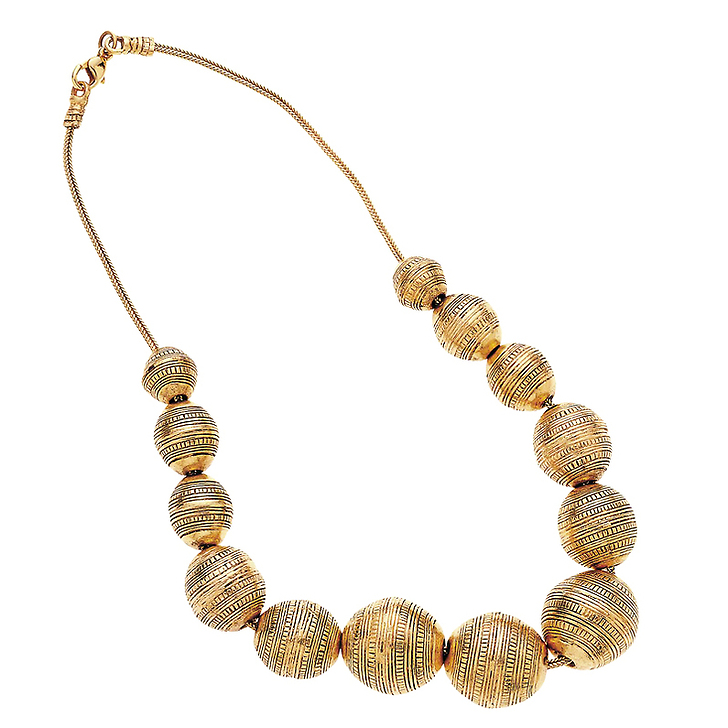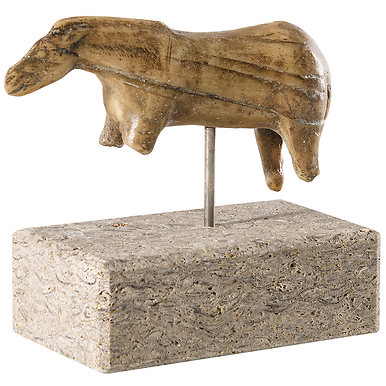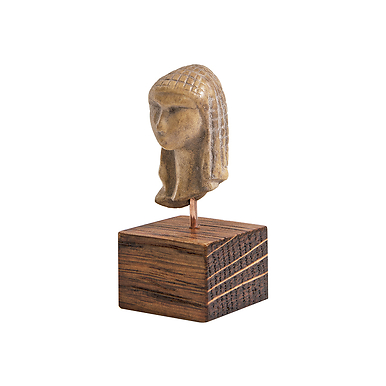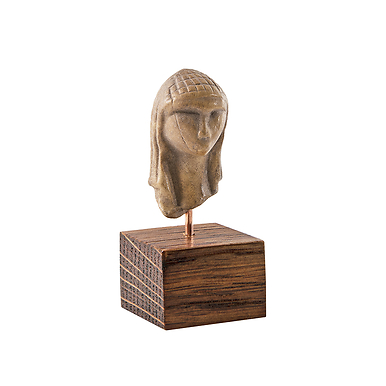Necklace Tréglonou
BZ400008
During the Iron Age, the west of Armorica stood out from ''Celtic Europe'' because of two main features: the carving of granite stelae and the digging of underground passages near settlements, place where this set was found.
Each bead is composed of two pressed gold shells, decorated with both chiselled...
Read more
During the Iron Age, the west of Armorica stood out from ''Celtic Europe'' because of two main features: the carving of granite stelae and the digging of underground passages near settlements, place where this set was found.
Each bead is composed of two pressed gold shells, decorated with both chiselled and embossed motifs.
These beads are unique, with no known equivalent jewellery in Europe. Certain comparisons may be made with Late Bronze Age pinheads found in Switzerland, with Hallstatt-period jewellery from Alsace, southern Germany and Switzerland, and with certain beads from the Late Bronze Age in Ireland and in Great Britain.
The Tréglonou beads could have a local origin and have been made between the 9th and 5th centuries B.C. They were deposited, hidden, or lost at the time the site was sealed up by its Iron Age occupants around 300-400 B.C.
Close
Login to see prices
Sold by GrandPalaisRmn










